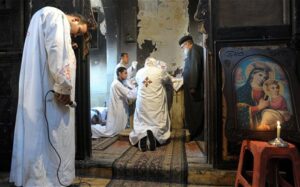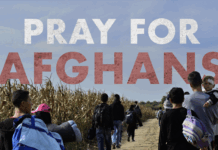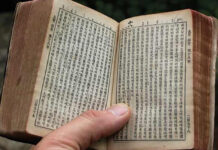By Wayne King, Compass Direct News
At least 12 people were killed and more than 200 were wounded when members of a conservative Muslim movement attacked two churches and surrounding Christian-owned homes and businesses in a poor section of Cairo on Saturday (May 7).

Salifis, a hard-line Islamic movement with extremist tendencies, set fire to one of the two church buildings, leaving most of it gutted. The arson attack on the Virgin Mary Church in Imbaba was one of many recent assaults on Coptic Christians by members of the Salafist movement, and the second time in two months that a church building in the country has been set ablaze.
The Rev. Mittias Ilias, head priest of the Virgin Mary Church in Imbaba, said the attack was senseless and beyond trying to explain with words.
“We don’t talk – the church screams for itself,” he said. “The church has five floors, and there is no space where the fire didn’t reach. The floors, the ceiling, the pillars, the church box, the chairs, the icons, all of it – everything was burned. Just give me one reason for all that. There is no reason for all that, nothing.”
The first attack started early Saturday evening (May 7) at St. Mina Church in Imbaba, one of the poorest districts of Cairo. A rumor spread that a Coptic woman who allegedly converted to Islam was being held in the church against her will. No one contacted by Compass in Imbaba could say definitively how the rumor got started, but by 7:30 p.m., according to one victim of the attack, crowds of Muslims chanting Islamic slogans and shouting Osama bin Laden’s name began marching down the streets.
Coptic community members began calling each other about a potential attack, and many started to gather at the church building. The Coptic men dragged pews and other furniture out of the building and built barricades on the streets that access it.
In attempts to dispel the rumor, the head clergy members of St. Mina allowed a group of Islamic imams into the church building to search for the woman. The imams declared to the gathering Muslims that the woman wasn’t in the building, according to witnesses at the scene.
Reports of who struck the first blows were contradictory, but the Salafist crowd was not dissuaded by the imams’ report, and by 8:30 p.m. the fight had started.
Christian witnesses of the attack said the Salafis, carrying knives and other weapons, attacked the men on the barricades, eventually hurling Molotov cocktails at them. There were numerous reports that the Salafis were armed with military-style assault weapons.
Muslim community members and at least one Egyptian Army officer said the Copts had weapons, a charge that all Copts interviewed vehemently denied.
Ramses Roushdy, 43, was injured in the attack. He said a piece of glass went into his eye from an exploding Molotov cocktail while he was defending his father, a lay leader in the church.
“It wasn’t like a rock or a stone hit me,” he said. “It was like there was an explosion, and a bunch of fragments hit me all over my body.”
The mob also attacked Coptic-owned business in Imbaba and apartments adjacent to the church. Roushdy’s cousin, Nashaat Ratieb, who lived close to the church, was killed in those attacks. According to local media reports, another man whose apartment was raided jumped to his death rather than face his attackers.
Second Attack
After unsuccessfully trying to push through the barricades, the mob went to the Virgin Mary Church, an undefended building a 10-minute walk from St. Mina. According to Ilias, the mob shot through locks on the church doors, went in and set the building on fire.
A few men were in the building when it was attacked. All escaped except for one, Salah Aziz, the church attendant. A group of youths trying to extinguish embers from the fire discovered his body in a side room of the sanctuary that was used a baptismal, Ilias said.
“We are believers. We believe that whoever dies goes to heaven to be with Christ,” Ilias said. “But myself and all of us personally, we get upset and feel bad for his family, his wife and children.”
The fire gutted the five-story structure except for a small chapel on the top floor of the building, which sustained substantial smoke damage. A few items scattered throughout the church building – mostly charred pews and one icon – were unscathed.
Ilias said he didn’t know how long it would take to reconstruct the building. The congregation will continue worshipping in the gutted building and hold services in shifts between renovation stints; they have no choice.
“Where are we going to go?” Ilias said. “Where are the people going to pray?”
Government Response
The army and security forces did not arrive on the scene until two hours after the attacks had almost fizzled out, according to witnesses.
Fire crews were deployed to the scene but did not get the fire under control for four hours. By Sunday (May 8), officials had cordoned off the area around both church buildings, established a curfew and blocked all media access the scene of the St. Mina attack.
The army allowed partial access to the Virgin Mary Church. Local media reported today that the army has pledged to rebuild the damaged building.
Demonstrations about the attacks continued to surge through areas of Cairo today, with reports of several demonstrators being arrested or injured.
Saturday’s attacks were most serious of a string of attacks and threats made by Salafis against Coptic Christians since the fall of the Hosni Mubarak regime earlier this year. Since the government collapse, members of the movement have ratcheted up their attacks and their rhetoric against the Copts, going as far as to cut off the ear of a Coptic man in Qena they accused of renting an apartment to prostitutes.
The movement, some Copts said, is trying to incite violence between the Muslim majority and the Coptic minority, now estimated to be 7 to 10 percent of Egypt’s population of 83 million. On Friday (May 6), several thousand Copts gathered at St. Mark’s Cathedral in Cairo in response to threats made by Salafis, who pattern their belief and practices on the first three generations of Muslims.
The Salafis demanded the church hand over a woman they say converted to Islam from Christianity; they claim the church is hiding her. There is no proof the woman ever converted. She has appeared publicly twice, once in a recorded statement in October and once on live TV on Saturday stating she wasn’t a Muslim and had never converted.
The Salafis had declared they were going to protest outside the church building after making a week of threats against Christians, including a threat to kill the head of the Coptic Orthodox Church, Pope Shenouda III. The leaders of the Salafi protest later canceled the demonstration so they could protest the killing of Bin Laden at the U.S. Embassy in Cairo. Fady Phillip, 25, a member of the church at the counter-protest, said he thought the Salafis were trying to provoke a civil war in Egypt along religious lines.
“They are going to deny they are provoking a civil war,” he said. “They can claim that as much as they want, but who can understand that they would break into my church in order to take the pope as a hostage and ask all the Christians to be silent?”



